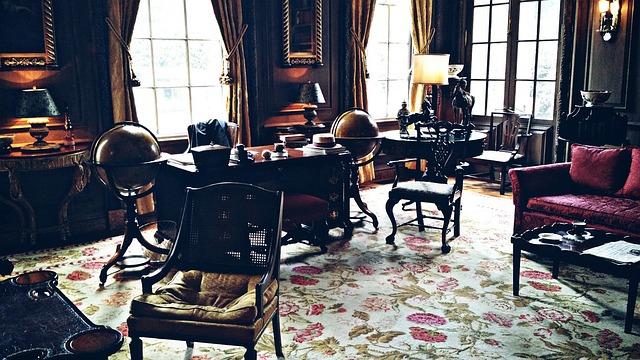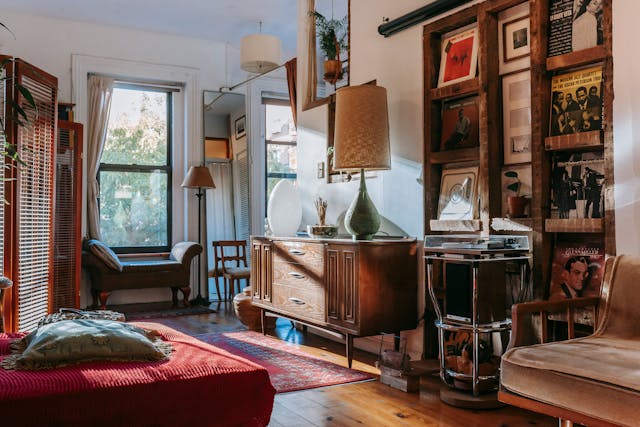In the world of contemporary home design, where sleek lines and modern aesthetics often dominate, there has been a notable resurgence of interest in the timeless allure of vintage revival. This movement seeks to blend the charm of the old world with the conveniences of the present, creating spaces that exude character and warmth. Vintage revival isn’t just about incorporating antique pieces; it’s a holistic approach that weaves together the past and present seamlessly. In this article, we’ll explore how vintage revival is making a significant impact on contemporary home design, transforming living spaces into unique expressions of history and style.
The Art of Curating Vintage Finds
One of the key elements of vintage revival is the art of curating unique and authentic pieces from the past. Homeowners and designers alike are turning to flea markets, estate sales, and antique shops to unearth treasures that tell stories of a bygone era. From weathered leather armchairs to ornate Victorian mirrors, each piece contributes to the narrative of the space. The beauty of vintage finds lies in their imperfections, the patina that comes with age, and the craftsmanship that stands the test of time. Integrating these pieces into a modern setting requires a discerning eye, balancing the old with the new to create a harmonious blend of textures, colors, and styles. This meticulous curation process adds a layer of authenticity to the design and invites a sense of nostalgia and intrigue into the home.
Timeless Elegance Meets Modern Functionality
While vintage revival embraces the charm of the past, it does not sacrifice the functionality and efficiency demanded by contemporary living. The seamless fusion of timeless elegance with modern amenities is a hallmark of this design approach. Classic architectural elements, such as crown molding and wainscoting, can coexist with state-of-the-art smart home technology. Old-world materials like reclaimed wood and vintage tiles find their place alongside energy-efficient appliances and sustainable materials. The result is a home that not only exudes character but also caters to the practical needs of today’s lifestyle. This balancing act requires a thoughtful approach, where each design choice is intentional, ensuring that the vintage elements not only complement but enhance the overall functionality of the space.
Creating a Home with Soul
In the era of mass-produced furnishings and cookie-cutter designs, vintage revival allows homeowners to infuse their spaces with personal narratives. Each vintage piece becomes a storyteller, reflecting the taste and history of its owner. Whether it’s a mid-century modern coffee table passed down through generations or a collection of vintage travel posters that evoke memories of adventures, these elements add a layer of soul to the home. Vintage revival is not about replicating a particular style but about creating a unique and personalized space that resonates with the dweller’s personality. It invites a sense of authenticity and warmth that is often lacking in more generic, off-the-shelf designs. By incorporating elements from the past, homeowners can craft living spaces that truly feel like home.
Partnerships with Companies Delivering High-Quality Wood
A crucial aspect of vintage revival in contemporary home design is the emphasis on sustainability and ethical sourcing. As awareness of environmental issues grows, homeowners and designers are increasingly seeking out companies that deliver high-quality wood sourced from sustainable forests. These companies prioritize responsible forestry practices, ensuring that each piece of timber is harvested in a way that minimizes environmental impact and supports the long-term health of forests. By partnering with such companies, designers can not only incorporate beautiful, high-quality wood into their projects but also contribute to the preservation of natural resources for future generations. This commitment to sustainability adds another layer of depth to the vintage revival movement, reinforcing its ethos of mindful consumption and respect for the world around us.
Restoring and Repurposing Vintage Materials
Another facet of the vintage revival movement lies in the restoration and repurposing of vintage materials. Salvaged wood from old barns, reclaimed bricks from historic buildings, and antique tiles from forgotten mansions all find new life in contemporary home designs. This not only adds character to the space but also contributes to the reduction of waste and the preservation of cultural heritage. Restoring these materials requires skilled craftsmanship, but the result is a home with a unique story etched into its very foundation. By blending the old with the new in this way, homeowners not only create a visually stunning environment but also actively participate in the conservation of architectural history.

Celebrating Artisanal Skills in Contemporary Design
In the age of mass production, the vintage revival movement celebrates the renaissance of craftsmanship. Artisanal skills that were once on the verge of extinction are now experiencing a resurgence as designers and homeowners alike seek out handmade, one-of-a-kind pieces. From hand-carved wooden furniture to meticulously crafted wrought iron fixtures, the attention to detail and quality craftsmanship stands as a testament to the enduring value of human skill. By incorporating these artisanal elements into contemporary spaces, the vintage revival movement not only revives traditional techniques but also fosters a deeper connection between the homeowner and the objects that fill their living space.
The vintage revival movement is a multifaceted approach to contemporary home design that goes beyond the mere incorporation of antique pieces. It encompasses the curation of unique finds, the seamless fusion of old-world charm with modern functionality, the personalized narratives embedded in each vintage piece, the responsible sourcing of high-quality wood, the restoration of heritage materials, and the celebration of artisanal craftsmanship. As homeowners seek a balance between nostalgia and innovation, the vintage revival movement stands as a testament to the enduring allure of timeless elegance in the modern era. By embracing the past, we not only create homes with character and soul but also contribute to a more sustainable and meaningful approach to design.







